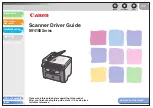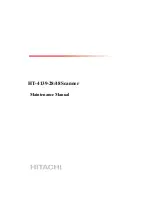
D-LX 100
Page
7
7.1. Setting the Flame Recognition Threshold
By setting the flame recognition threshold on the flame scanner, the operator of the combustion
system determines whether the flame signal (pulse frequency) of the integrated flame scanner should
generate a flame ON or flame OFF signal. This threshold is set using the push button switch on the
front panel, and may be programmed to one of ten settings. After start-up, the threshold setting must
be protected from unauthorized changes.
Switch setting ”0” is the highest threshold. The flame scanner must generate a strong flame signal in
order to register flame ON. Position ”9” is the lowest threshold. A weak flame signal is sufficient to
trigger and maintain a flame ON signal.
!
The operator uses this threshold setting to determine
when the flame scanner signals flame ON or OFF.
The green (flame ON) LED and the 4-20 mA (or 0-20 mA) analog output for flame intensity may be
used to select the proper switch position. However, use of the D-ZS 087-20 Digital Display Unit is
recommended. When setting the flame recognition threshold, one must always consider the possible
influence of ambient light. This can play a role both in multi-burner and single burner applications.
Flame OFF Setting:
If the burner is shut down, the flame recognition threshold (switch-on threshold) must be set high
enough that the flame scanner does not see any ambient light and reliably signals ”Flame OFF”:
•
the green ”Flame” LED is not illuminated,
•
the current in the flame intensity measurement circuit is less than 8 (or 5) mA,
•
the fail-safe relay output to the external flame ON signal is open.
Flame ON Setting:
If the burner is operating, the flame signal must reliably exceed the flame recognition (shut-off)
threshold and signal ”Flame ON”:
•
the green ”Flame” LED is illuminated,
•
the current in the flame intensity measurement circuit is greater than 12 (or 10) mA
•
the fail-safe relay output to the external flame ON signal is closed.
Example:
The flame recognition threshold is set on site such that a flame ON signal is reliably present given
sufficient flame intensity, under all load conditions. That is to say, the flame intensity current display
fluctuates between 12 (or 10) and 20 mA. If the flame image deteriorates too much, the flame signal
(pulse frequency) must dip below the shut-off threshold. The safety time programmed into the
scanner will then begin to run. After the safety time expires, the flame OFF signal is given and the
green LED goes out (flame intensity current is less than 8 (or 5) mA).
!
Once the scanner’s alignment and flame recognition threshold have been
properly determined, the D-LX 100 must reliably report if a burner is shut down
or if an impermissible deterioration of the flame image occurs. Consideration
must be given in order that ambient light sources do not generate faulty system
status. The operator must see to it that the settings are never changed by
unauthorized personnel.
If the flame recognition threshold is changed, one must be aware that if the push button is not pressed
all the way, it is possible to have the scanner programmed to an intermediate setting, between
settings 1 and 2, for example. If the switch is stuck in one of these undefined settings for more than 8
s, an error shutdown will occur.












































